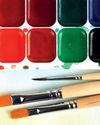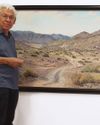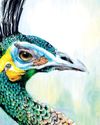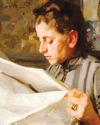
ELEMENTS OF COMPOSITION
In modern times we can trace the elements and principles of art and design back through history. Together, the elements and principles form the foundation of the language of art. This provides the current day artist (novice or experienced) with having everyday art terms and a language to express to others what artists of old have used in their own creative process.
At first, when discovering the power that composition and design holds for the novice and experienced artist, your whole view of what art is about, changes. You discover that the principles of art are not the same for any two artists using them. They all use the same art elements and principles, in quite different ways.
The knowledge and understanding of design and composition opens up and gives meaningful ways to realise how to express yourself through the creative process. It gives you the visual words to explain to others, what you were thinking and experiencing, when you created your art. In the end, successful artistic expression requires that boundaries be pushed to suit the artists’ intent to the point where the artist finally has the ability to let others hear their artistic voice. It makes it possible to express in a unique way, the same as others have been doing throughout history. The language thus never grows old or becomes outdated.
The joy of seeing what tools the artist has used and how they were used in producing their art, fascinates me. In this mix the artist uses composition and design as the tool to make things look right. By using and applying the principles of art, the artist conveys their intent. The intent being, the combination and use of the ingredients to make memorable art. These principles and their use also aid in determining whether a painting is finished or not.
Esta historia es de la edición Issue 50 de The South African Artist.
Comience su prueba gratuita de Magzter GOLD de 7 días para acceder a miles de historias premium seleccionadas y a más de 9,000 revistas y periódicos.
Ya eres suscriptor ? Conectar
Esta historia es de la edición Issue 50 de The South African Artist.
Comience su prueba gratuita de Magzter GOLD de 7 días para acceder a miles de historias premium seleccionadas y a más de 9,000 revistas y periódicos.
Ya eres suscriptor? Conectar

Oil Painting Essentials
Tips and techniques: oils

Tips And Techniques: Watercolours
Tips and techniques: watercolours

How To Paint A Classic Autumn Scene
Who can resist painting an Autumn scene?

small towns & the big city
The sight of a print of Tretchikoffs "Dying Swan" on the wall at a friend’s house, when David Roux was only five years old, was the start of a lifelong interest in art.

life and landscapes
Johan Coetzee’s journey to becoming a full time artist began long before he went to college.

the shape of colour
FEATURED ARTIST: SHAKES TEMBANI
coloured roses in aquarelle
TIPS AND TECHNIQUES: GOLDFABER AQUA

colourful peacock
TIPS AND TECHNIQUES: CHAMELEON PENS

a South African artist makes his mark in New York
FEATURED ARTIST: LUKE BAGGOTT

Painting With The Zorn Palette
The Zorn palette is named after Anders Leonard Zorn (February 18, 1860 – August 22, 1920), an internationally successful artist from Sweden.